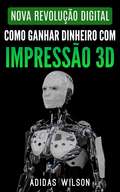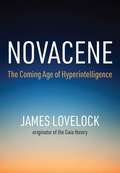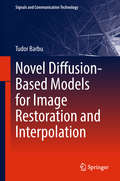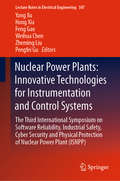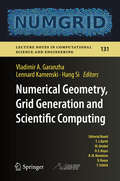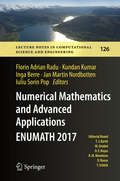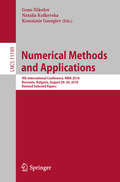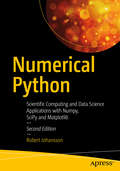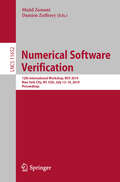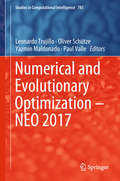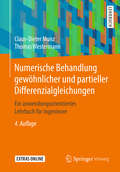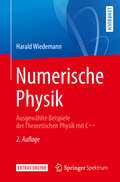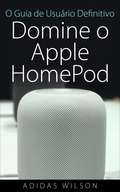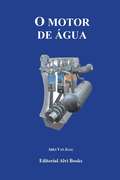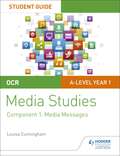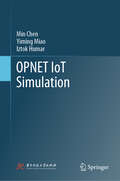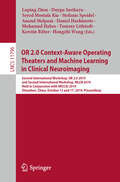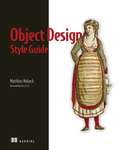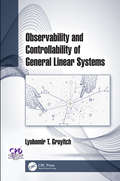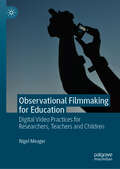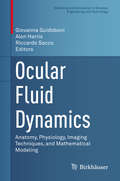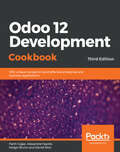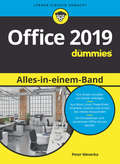- Table View
- List View
Nova revolução digital: Como ganhar dinheiro com impressão 3D
by Adidas WilsonComo a impressão 3D está se tornando popular, muitas pessoas estão ganhando uma fortuna e se tornando grandes na indústria. Tal conquista pode não ser moleza, mas procurar maneiras de obter um avanço é, de longe, a única maneira de chegar lá e perceber o que os outros conceituaram em meios lucrativos. Se você sempre teve interesse em impressão 3D e está ganhando dinheiro com essa tecnologia, já é hora de trabalhar com inteligência para vencer os desafios à frente. Os modelos imprimíveis em 3D podem ser criados com um pacote de desenho assistido por computador (CAD), por meio de um scanner 3D, ou por uma câmera digital simples e um software de fotogrametria. Modelos impressos em 3D criados com CAD resultam em erros reduzidos e podem ser corrigidos antes da impressão, permitindo a verificação no design do objeto antes de ser impresso. Vários projetos e empresas estão se esforçando para desenvolver impressoras 3D acessíveis para uso em desktop doméstico. Grande parte deste trabalho foi dirigido e direcionado a comunidades de DIY / fabricantes / entusiasta / pioneiro, com laços adicionais com as comunidades acadêmicas e hackers. A impressão tridimensional torna tão barato criar itens únicos quanto produzir milhares e, assim, prejudicar as economias de escala. Pode ter um impacto tão profundo no mundo quanto a chegada da fábrica... Assim como ninguém poderia prever o impacto da máquina a vapor em 1750 - ou a impressora em 1450, ou o transistor em 1950. É impossível prever o impacto a longo prazo da impressão 3D. Mas a tecnologia está chegando, e é provável que atrapalhe todos os campos que ela toca.
Novacene: The Coming Age of Hyperintelligence
by James Lovelock Bryan AppleyardJames Lovelock, creator of the Gaia hypothesis and the greatest environmental thinker of our time, has produced an astounding new theory about the future of life on Earth. He argues that the Anthropocene--the age in which humans acquired planetary-scale technologies--is, after 300 years, coming to an end. A new age--the Novacene--has already begun. In the Novacene, new beings will emerge from existing artificial intelligence systems. They will think 10,000 times faster than we do and they will regard us as we now regard plants. But this will not be the cruel, violent machine takeover of the planet imagined by science fiction. These hyperintelligent beings will be as dependent on the health of the planet as we are. They will need the planetary cooling system of Gaia to defend them from the increasing heat of the sun as much as we do. And Gaia depends on organic life. We will be partners in this project. It is crucial, Lovelock argues, that the intelligence of Earth survives and prospers. He does not think there are intelligent aliens, so we are the only beings capable of understanding the cosmos. Perhaps, he speculates, the Novacene could even be the beginning of a process that will finally lead to intelligence suffusing the entire cosmos. At the age of 100, James Lovelock has produced the most important and compelling work of his life. James Lovelock is the originator of the Gaia hypothesis (now Gaia theory). His many books on the subject include Gaia: A New Look at Life on Earth, The Revenge of Gaia, The Vanishing Face of Gaia, and A Rough Ride to the Future. The author of more than 200 scientific papers, he was elected a Fellow of the Royal Society in 1974."
Novel Diffusion-Based Models for Image Restoration and Interpolation (Signals and Communication Technology)
by Tudor BarbuThis book covers two essential PDE-based image processing fields: image denoising and image inpainting. It describes the state-of-the-art PDE-based image restoration and interpolation (inpainting) techniques, focusing on the latest advances in PDE-based image processing and analysis, and explores novel techniques involving diffusion-based models and variational schemes. The PDE and variational schemes clearly outperform the conventional approaches in these areas, and can successfully remove image noise and reconstruct missing or highly degraded regions, while preserving the essential features and avoiding unintended effects. The book addresses researchers and graduate students, but is also well suited for professionals in both the mathematics and electrical engineering domains, as it provides rigorous mathematical investigations of the image processing models described, as well as mathematical treatments for the numerical approximation schemes of these differential models.
Nuclear Power Plants: The Third International Symposium on Software Reliability, Industrial Safety, Cyber Security and Physical Protection of Nuclear Power Plant (ISNPP) (Lecture Notes in Electrical Engineering #507)
by Yang Xu Feng Gao Weihua Chen Zheming Liu Pengfei Gu Hong XiaThis book is a compilation of selected papers from the 3rd International Symposium on Software Reliability, Industrial Safety, Cyber Security and Physical Protection of Nuclear Power Plants, held in Harbin, China on 15th–17th August 2018. The symposium discussed the status quo, technical advances and development direction of digital instrument control technology, software reliability, information security and physical protection in the process of nuclear power development. Offering technical insights and know from leading experts, this book is a valuable resource for both practitioners and academics working in the field of nuclear instrumentation, control systems and other safety-critical systems, as well as nuclear power plant managers, public officials, and regulatory authorities.
Numerical C: Applied Computational Programming with Case Studies
by Philip JoyceLearn applied numerical computing using the C programming language, starting with a quick primer on the C programming language and its SDK. This book then dives into progressively more complex applied math formula for computational methods using C with examples throughout and a larger, more complete application towards the end. Numerical C starts with the quadratic formula for finding solutions to algebraic equations that model things such as price vs. demand or rise vs. run or slip and more. Later in the book, you'll work on the augmented matrix method for simultaneous equations. You’ll also cover Monte Carlo method model objects that could arise naturally as part of the modeling of a real-life system, such as a complex road network, the transport of neutrons, or the evolution of the stock market. Furthermore, the Monte Carlo method of integration examines the area under a curve including rendering or ray tracing and the shading in a region. Furthermore, you'll work with the product moment correlation coefficient: correlation is a technique for investigating the relationship between two quantitative, continuous variables, for example, age and blood pressure. By the end of the book, you'll have a feeling for what computer software could do to help you in your work and apply some of the methods learned directly to your work. What You Will LearnGain software and C programming basicsWrite software to solve applied, computational mathematics problems Create programs to solve equations and calculus problems Use the trapezium method, Monte Carlo method, line of best fit, product moment correlation coefficient, Simpson’s rule, and matrix solutions Write code to solve differential equations Apply one or more of the methods to an application case studyWho This Book Is ForThose with an existing knowledge of rudimentary mathematics (school level) and some basic programming experience. This is also important to people who may work in mathematics or other areas (for example, life sciences, engineering, or economics) and need to learn C programming.
Numerical Geometry, Grid Generation and Scientific Computing: Proceedings of the 9th International Conference, NUMGRID 2018 / Voronoi 150, Celebrating the 150th Anniversary of G.F. Voronoi, Moscow, Russia, December 2018 (Lecture Notes in Computational Science and Engineering #131)
by Vladimir A. Garanzha Lennard Kamenski Hang SiThe focus of these conference proceedings is on research, development, and applications in the fields of numerical geometry, scientific computing and numerical simulation, particularly in mesh generation and related problems. In addition, this year’s special focus is on Voronoi diagrams and their applications, celebrating the 150th birthday of G.F. Voronoi. In terms of content, the book strikes a balance between engineering algorithms and mathematical foundations. It presents an overview of recent advances in numerical geometry, grid generation and adaptation in terms of mathematical foundations, algorithm and software development and applications. The specific topics covered include: quasi-conformal and quasi-isometric mappings, hyperelastic deformations, multidimensional generalisations of the equidistribution principle, discrete differential geometry, spatial and metric encodings, Voronoi-Delaunay theory for tilings and partitions, duality in mathematical programming and numerical geometry, mesh-based optimisation and optimal control methods. Further aspects examined include iterative solvers for variational problems and algorithm and software development. The applications of the methods discussed are multidisciplinary and include problems from mathematics, physics, biology, chemistry, material science, and engineering.
Numerical Mathematics and Advanced Applications ENUMATH 2017 (Lecture Notes in Computational Science and Engineering #126)
by Jan Martin Nordbotten Florin Adrian Radu Kundan Kumar Inga Berre Iuliu Sorin PopThis book collects many of the presented papers, as plenary presentations, mini-symposia invited presentations, or contributed talks, from the European Conference on Numerical Mathematics and Advanced Applications (ENUMATH) 2017. The conference was organized by the University of Bergen, Norway from September 25 to 29, 2017. Leading experts in the field presented the latest results and ideas in the designing, implementation, and analysis of numerical algorithms as well as their applications to relevant, societal problems.ENUMATH is a series of conferences held every two years to provide a forum for discussing basic aspects and new trends in numerical mathematics and scientific and industrial applications. These discussions are upheld at the highest level of international expertise. The first ENUMATH conference was held in Paris in 1995 with successive conferences being held at various locations across Europe, including Heidelberg (1997), Jyvaskyla (1999), lschia Porto (2001), Prague (2003), Santiago de Compostela (2005), Graz (2007), Uppsala (2009), Leicester (2011), Lausanne (2013), and Ankara (2015).
Numerical Methods and Applications: 9th International Conference, NMA 2018, Borovets, Bulgaria, August 20-24, 2018, Revised Selected Papers (Lecture Notes in Computer Science #11189)
by Krassimir Georgiev Geno Nikolov Natalia KolkovskaThis book constitutes the thoroughly refereed post-conference proceedings of the 9th International Conference on Numerical Methods and Applications, NMA 2018, held in Borovets, Bulgaria, in August 2018. The 56 revised regular papers presented were carefully reviewed and selected from 61 submissions for inclusion in this book. The papers are organized in the following topical sections: numerical search and optimization; problem-driven numerical method: motivation and application, numerical methods for fractional diffusion problems; orthogonal polynomials and numerical quadratures; and Monte Carlo and Quasi-Monte Carlo methods.
Numerical Python: Scientific Computing and Data Science Applications with Numpy, SciPy and Matplotlib
by Robert Johansson<p>Leverage the numerical and mathematical modules in Python and its standard library as well as popular open source numerical Python packages like NumPy, SciPy, FiPy, matplotlib and more. This fully revised edition, updated with the latest details of each package and changes to Jupyter projects, demonstrates how to numerically compute solutions and mathematically model applications in big data, cloud computing, financial engineering, business management and more. <p>Numerical Python, Second Edition, presents many brand-new case study examples of applications in data science and statistics using Python, along with extensions to many previous examples. Each of these demonstrates the power of Python for rapid development and exploratory computing due to its simple and high-level syntax and multiple options for data analysis. <p>After reading this book, readers will be familiar with many computing techniques including array-based and symbolic computing, visualization and numerical file I/O, equation solving, optimization, interpolation and integration, and domain-specific computational problems, such as differential equation solving, data analysis, statistical modeling and machine learning. <p>What You'll Learn <p> <li>Work with vectors and matrices using NumPy <li>Plot and visualize data with Matplotlib <li>Perform data analysis tasks with Pandas and SciPy <li>Review statistical modeling and machine learning with statsmodels and scikit-learn <li>Optimize Python code using Numba and Cython</li> <p> <p>Who This Book Is For: <p> <li>Developers who want to understand how to use Python and its related ecosystem for numerical computing. </li></p>
Numerical Software Verification: 12th International Workshop, NSV 2019, New York City, NY, USA, July 13–14, 2019, Proceedings (Lecture Notes in Computer Science #11652)
by Majid Zamani Damien ZuffereyThis book constitutes the proceedings of the 12th International Workshop on Numerical Software Verification, NSV 2019, held in New York City, NY, USA, in July 2019 - colocated with the International Conference on Computer Aided Verification, CAV 2019. The 5 full papers presented together with 2 short papers, 3 abstracts of invited talks, and 2 tutorial papers were carefully reviewed and selected from numerous submissions. The NSV 2017 workshop is dedicated to the development of logical and mathematical techniques for the reasoning about programmability and reliability.
Numerical and Evolutionary Optimization – NEO 2017 (Studies in Computational Intelligence #785)
by Oliver Schütze Leonardo Trujillo Yazmin Maldonado Paul ValleThis book features 15 chapters based on the Numerical and Evolutionary Optimization (NEO 2017) workshop, held from September 27 to 29 in the city of Tijuana, Mexico. The event gathered researchers from two complimentary fields to discuss the theory, development and application of state-of-the-art techniques to address search and optimization problems. The lively event included 7 invited talks and 64 regular talks covering a wide range of topics, from evolutionary computer vision and machine learning with evolutionary computation, to set oriented numeric and steepest descent techniques. Including research submitted by the NEO community, the book provides informative and stimulating material for future research in the field.
Numerische Behandlung gewöhnlicher und partieller Differenzialgleichungen: Ein anwendungsorientiertes Lehrbuch für Ingenieure
by Claus-Dieter Munz Thomas WestermannDie Autoren vermitteln die Herleitung numerischer Algorithmen zur Lösung von Differenzialgleichungen und geben einen Einblick in die praktische Implementierung. Anhand von Beispielen und Übungsaufgaben mit Problemstellungen aus der Ingenieurspraxis werden Eigenschaften und Einsatzbereiche der verschiedenen Verfahren erläutert. Die beiliegende CD-ROM enthält neben den Lösungswegen auch eine interaktive Version des Buchs. Mithilfe des Computer-Algebra-Systems MAPLE können die beschriebenen Verfahren direkt aus dem Text heraus ausgeführt werden.
Numerische Physik: Ausgewählte Beispiele der Theoretischen Physik mit C++ (Springer-Lehrbuch)
by Harald WiedemannDieses Lehrbuch stellt die Numerische Physik anhand einer Vielzahl von Beispielen aus den Bereichen Mechanik, Elektrodynamik, Optik, Statistischer Physik und Quantenmechanik dar. Der Leser lernt hier nicht nur die wichtigsten numerischen Techniken in der Programmiersprache C++ kennen, sondern erhält auch neue Einblicke in die Physik, die konventionelle Zugänge nicht bieten. Das Werk schließt damit eine Lücke zwischen den Standardlehrbüchern der Theoretischen Physik und denen der reinen Programmierung.Zu jedem der physikalischen Themen gibt es eine kurze Wiederholung des theoretischen Hintergrunds und anschließend werden ausgewählte Beispiele im Detail ausgearbeitet. Übungen am Ende des Kapitels bieten weitere Gelegenheit die Anwendungen des Gelernten zu vertiefen.Das Buch richtet sich vornehmlich an Physikstudierende höherer Semester, die bereits über eine Basis in Theoretischer Physik verfügen und auch Grundkenntnisse in der Programmierung in C++ mitbringen.Auf der Produktseite zum Buch auf springer.com finden sich alle Quelltexte zu den Programmen im Buchtext zum Download. Im Anhang erhalten Sie eine Zusammenstellung und Erläuterung frei verfügbarer Software, die sowohl dem Windows-Anwender als auch dem Linux-Freund alle Werkzeuge an die Hand gibt, die er zur Bearbeitung anspruchsvoller physikalischer Fragestellungen benötigt - von Compilern über numerische Bibliotheken bis hin zu Visualisierungstools.
O Guia de Usuário Definitivo: Domine o Apple HomePod
by Adidas WilsonDomine o Apple HomePod usando dicas, truques, tutoriais completos, resolvendo problemas e muito mais.
O Motor de Água: Editorial Alvi Books
by Ares Van JaagO "motor de água" é uma invenção infelizmente inventada muitas vezes. O hidrogênio da água é muito abundante, renovável e pode ser usado em países pobres e ricos em energia. O petróleo bruto e o gás natural são recursos energéticos limitados. Mas há muitas pessoas que pensam que certas tecnologias promissoras foram suprimidas por várias potências políticas ou econômicas, geralmente com o propósito de proteger seus investimentos e interesses e, nos extremos já mais absurdos da conspiração ilógica, por motivações sinistras de muito maior alcance. Neste novo trabalho, o versátil compositor e escritor Van Jaag, nos acompanha em uma emocionante jornada através da história desta invenção desconhecida e seus inventores insultados.
OCR A Level Media Studies Student Guide 1: Media Messages
by Louisa CunninghamExam board: OCRLevel: A-levelSubject: Media StudiesFirst teaching: September 2017First exams: Summer 2018Build, reinforce and assess the knowledge and skills required for OCR A Level Media Studies; this accessible guide provides full coverage of the content in Component 1, alongside practice questions and assessment guidance.Produced in partnership with OCR, this book:- Concisely covers all aspects of 'News' and 'Media Language and Representation'- Increases knowledge of the theoretical framework and contexts surrounding the set media products, with clear explanations and relevant examples- Develops the skills of critical analysis, reflection and evaluation that students need in order to use, apply and debate academic ideas and arguments- Ensures understanding of specialist terminology by defining the key terms within the specification- Helps students achieve their best under the new assessment requirements with practice questions, study advice and assessment support
OCR A Level Media Studies Student Guide 1: Media Messages
by Louisa CunninghamExam board: OCRLevel: A-levelSubject: Media StudiesFirst teaching: September 2017First exams: Summer 2018Build, reinforce and assess the knowledge and skills required for OCR A Level Media Studies; this accessible guide provides full coverage of the content in Component 1, alongside practice questions and assessment guidance.Produced in partnership with OCR, this book:- Concisely covers all aspects of 'News' and 'Media Language and Representation'- Increases knowledge of the theoretical framework and contexts surrounding the set media products, with clear explanations and relevant examples- Develops the skills of critical analysis, reflection and evaluation that students need in order to use, apply and debate academic ideas and arguments- Ensures understanding of specialist terminology by defining the key terms within the specification- Helps students achieve their best under the new assessment requirements with practice questions, study advice and assessment support
OPNET IoT Simulation
by Min Chen Iztok Humar Yiming MiaoThis is the first book offering an in-depth and comprehensive IoT network simulation, supported by OPNET tool. Furthermore, the book presents the simulations of IoT in general, not limited by OPNET. The authors provide rich OPNET IoT simulation codes, with detailed explanation regarding the functionalities of the model. These codes can facilitate readers’ fast implementation, and the shared model can guide readers through developing their own research. This book addresses various versions of Internet of Things (IoT), including human-centric IoT, green IoT, Narrow band IoT, Smart IoT, IoT-Cloud integration. The introduced OPNET IoT simulation provides a comprehensive platform to simulate above-mentioned IoT systems. Besides, this book introduces OPNET semi-physical simulation in detail. Based on this technology, simulated IoT and practical cloud are seamlessly connected with each other. On top of this “IoT-cloud-integration” semi-physical simulation environment, various smart IoT applications can be realized.
OR 2.0 Context-Aware Operating Theaters and Machine Learning in Clinical Neuroimaging: Second International Workshop, OR 2.0 2019, and Second International Workshop, MLCN 2019, Held in Conjunction with MICCAI 2019, Shenzhen, China, October 13 and 17, 2019, Proceedings (Lecture Notes in Computer Science #11796)
by Hongzhi Wang Duygu Sarikaya Anand Malpani Seyed Mostafa Kia Tommy Löfstedt Luping Zhou Stefanie Speidel Daniel Hashimoto Mohamad Habes Kerstin RitterThis book constitutes the refereed proceedings of the Second International Workshop on Context-Aware Surgical Theaters, OR 2.0 2019, and the Second International Workshop on Machine Learning in Clinical Neuroimaging, MLCN 2019, held in conjunction with MICCAI 2019, in Shenzhen, China, in October 2019. For OR 2.0 all 6 submissions were accepted for publication. They aim to highlight the potential use of machine vision and perception, robotics, surgical simulation and modeling, multi-modal data fusion and visualization, image analysis, advanced imaging, advanced display technologies, human-computer interfaces, sensors, wearable and implantable electronics and robots, visual attention models, cognitive models, decision support networks to enhance surgical procedural assistance, context-awareness and team communication in the operating theater, human-robot collaborative systems, and surgical training and assessment. MLCN 2019 accepted 6 papers out of 7 submissions for publication. They focus on addressing the problems of applying machine learning to large and multi-site clinical neuroimaging datasets. The workshop aimed to bring together experts in both machine learning and clinical neuroimaging to discuss and hopefully bridge the existing challenges of applied machine learning in clinical neuroscience.
Object Design Style Guide: Powerful Techniques For Creating Flexible, Readable, And Maintainable Object-oriented Code In Any Oo Language, From Python To Php
by Matthias Noback&”Demystifies object-oriented programming, and lays out how to use it to design truly secure and performant applications.&” —Charles Soetan, Plum.io Key Features Dozens of techniques for writing object-oriented code that&’s easy to read, reuse, and maintain Write code that other programmers will instantly understand Design rules for constructing objects, changing and exposing state, and more Examples written in an instantly familiar pseudocode that&’s easy to apply to Java, Python, C#, and any object-oriented language Purchase of the print book includes a free eBook in PDF, Kindle, and ePub formats from Manning Publications.About The Book Well-written object-oriented code is easy to read, modify, and debug. Elevate your coding style by mastering the universal best practices for object design presented in this book. These clearly presented rules, which apply to any OO language, maximize the clarity and durability of your codebase and increase productivity for you and your team. In Object Design Style Guide, veteran developer Matthias Noback lays out design rules for constructing objects, defining methods, and much more. All examples use instantly familiar pseudocode, so you can follow along in the language you prefer. You&’ll go case by case through important scenarios and challenges for object design and then walk through a simple web application that demonstrates how different types of objects can work together effectively. What You Will Learn Universal design rules for a wide range of objects Best practices for testing objects A catalog of common object types Changing and exposing state Test your object design skills with exercises This Book Is Written For For readers familiar with an object-oriented language and basic application architecture. About the Author Matthias Noback is a professional web developer with nearly two decades of experience. He runs his own web development, training, and consultancy company called &“Noback&’s Office.&” Table of Contents: 1 ¦ Programming with objects: A primer 2 ¦ Creating services 3 ¦ Creating other objects 4 ¦ Manipulating objects 5 ¦ Using objects 6 ¦ Retrieving information 7 ¦ Performing tasks 8 ¦ Dividing responsibilities 9 ¦ Changing the behavior of services 10 ¦ A field guide to objects 11 ¦ Epilogue
Observability and Controllability of General Linear Systems
by Lyubomir GruyitchObservability and Controllability of General Linear Systems treats five different families of the linear systems, three of which are new. The book begins with the definition of time together with a brief description of its crucial properties. It presents further new results on matrices, on polynomial matrices, on matrix polynomials, on rational matrices, and on the new compact, simple and elegant calculus that enabled the generalization of the transfer function matrix concept and of the state concept, the proofs of the new necessary and sufficient observability and controllability conditions for all five classes of the studied systems. <P><P>Features <li>Generalizes the state space concept and the complex domain fundamentals of the control systems unknown in previously published books by other authors. <li>Addresses the knowledge and ability necessary to overcome the crucial lacunae of the existing control theory and drawbacks of its applications. <li>Outlines new effective mathematical means for effective complete analysis and synthesis of the control systems. <li>Upgrades, completes and broadens the control theory related to the classical self-contained control concepts: observability and controllability. <li>Provides information necessary to create and teach advanced inherently upgraded control courses.
Observational Filmmaking for Education: Digital Video Practices for Researchers, Teachers and Children (Creativity, Education and the Arts)
by Nigel MeagerThis book places observational filmmaking in the context of the rapidly developing landscape of creativity and arts based research in education. The author uses observational filmmaking as a lens to address debates surrounding video based and arts based research. Utilising the work of Dewey and Deleuze as the theoretical underpinnings of the volume, this is combined with numerous practical examples of observational filmmaking in schools. The author argues that observational video camera and editing techniques combine careful observation with rigorous visual analysis: they place sensory, affectual and aesthetic qualities in experience centre stage. While observational filmmaking in itself has enormous potential as a methodology for education research, it may also become a fulcrum for children’s learning. Children record their experiences in the world around them as they look carefully with a video camera. This pioneering yet practical book will be of interest and value to students and scholars of creativity, learning, and education research methods, as well as constituting a useful guide for teachers, arts practitioners and education policy makers.
Ocular Fluid Dynamics: Anatomy, Physiology, Imaging Techniques, and Mathematical Modeling (Modeling and Simulation in Science, Engineering and Technology)
by Alon Harris Riccardo Sacco Giovanna GuidoboniThe chapters in this contributed volume showcase current theoretical approaches in the modeling of ocular fluid dynamics in health and disease. By including chapters written by experts from a variety of fields, this volume will help foster a genuinely collaborative spirit between clinical and research scientists. It vividly illustrates the advantages of clinical and experimental methods, data-driven modeling, and physically-based modeling, while also detailing the limitations of each approach. Blood, aqueous humor, vitreous humor, tear film, and cerebrospinal fluid each have a section dedicated to their anatomy and physiology, pathological conditions, imaging techniques, and mathematical modeling. Because each fluid receives a thorough analysis from experts in their respective fields, this volume stands out among the existing ophthalmology literature.Ocular Fluid Dynamics is ideal for current and future graduate students in applied mathematics and ophthalmology who wish to explore the field by investigating open questions, experimental technologies, and mathematical models. It will also be a valuable resource for researchers in mathematics, engineering, physics, computer science, chemistry, ophthalmology, and more.
Odoo 12 Development Cookbook: 190+ unique recipes to build effective enterprise and business applications, 3rd Edition
by Daniel Reis Holger Brunn Alexandre Fayolle Parth GajjarBuild customized solutions for your business using the latest features of Odoo 12 and PythonKey FeaturesGet up to speed with Odoo 12 to create custom and reusable modulesInterconnect your application with other systems by implementing web APIsUnderstand the mechanisms powering the Odoo framework and Odoo.sh to build robust enterprisesBook DescriptionOdoo is a powerful framework known for rapid application development. Its latest release, Odoo 12, introduces tons of new features. With this book, you'll learn how to develop powerful Odoo applications from scratch, using all the latest features.This Odoo cookbook starts by covering Odoo installation and deployment on the server. Next, you'll explore the Odoo framework with real-world examples. You'll create a new Odoo module from the ground up and progress to advanced framework concepts. You'll also learn how to modify existing applications, including Point of Sale (POS). This book is not just limited to backend development; the advanced JavaScript recipes for creating new views and widgets will help you build beautiful UI elements. As you move forward, you'll gain insights into website development and become a quality Odoo developer by studying performance optimization, debugging, and automated tests. Finally, you'll learn the latest concepts like multi-website, In-App Purchasing (IAP), Odoo.sh, and IoT Box.By the end of the book, you'll have all the knowledge you need to build powerful Odoo applications. The development best practices used in this book will undoubtedly come handy when you are working with the Odoo framework.What you will learnDevelop a module in the Odoo framework and modify the existing flow of any applicationBuild dynamic websites with Odoo CMSCreate and modify backend JavaScript components in Odoo and POSConnect and access any object in Odoo via Remote Procedure Calls (RPC)Illustrate the different tools available in Odoo to implement business processes for your recordsImplement in-app purchase servicesManage, deploy, and test an Odoo instance with the PaaS Odoo.shConfigure IoT Box to add and upgrade Point of Sale (POS) hardwareWho this book is forIf you're a Python developer who wants to develop highly efficient business applications with the latest Odoo framework, or if you just want a solution guide for all your Odoo development issues, this book is for you. Some JavaScript programming and web development experience is necessary to get the most out of this book.
Office 2019 Alles-in-einem-Band für Dummies (Für Dummies)
by Peter WeverkaSie können Zeit und Nerven sparen, wenn Sie sich mit Office richtig gut auskennen! Grund genug, sich von diesem Buch in Office 2019 einführen zu lassen. Sie finden übersichtliche Anleitungen für die täglichen Aufgaben mit Office und vielfältige Tipps, wie Sie Ihre Arbeit effektiver gestalten. Dieses Buch hilft Ihnen, gut strukturierte Word-Dokumente zu erstellen, Zahlen in Excel sinnvoll zusammenzufassen und zu deuten, Ihre Geschichte mit PowerPoint zu erzählen und Ihr Leben mit Outlook zu organisieren. Mit zusätzlichen Teilen über Access und für Leser, für die es ein wenig mehr sein soll, bleiben keine Wünsche offen.
